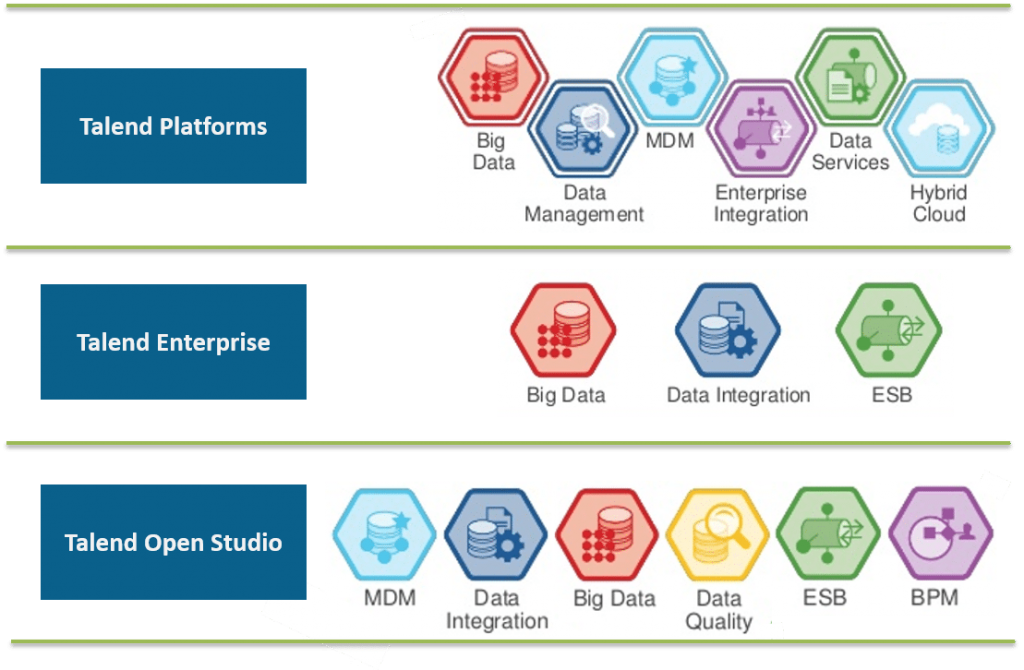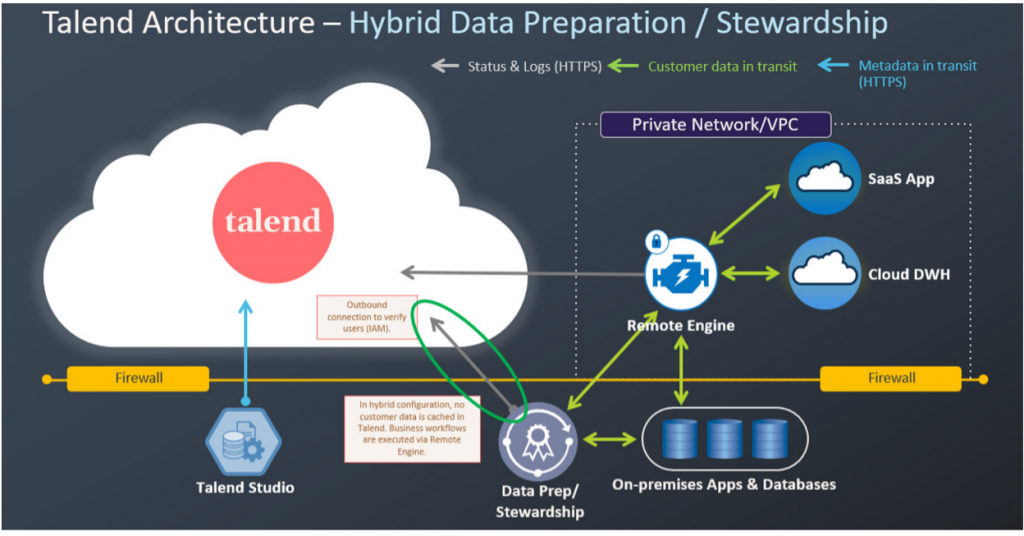What is Talend Data Preparation?

Talend Data Preparation is a data preparation tool that helps you clean, enrich, and transform your data. It is a cloud-based platform that can be used to work with data from a variety of sources, including spreadsheets, databases, and files. Talend Data Preparation uses a visual interface that makes it easy to understand and manipulate data.
Top 10 use cases of Talend Data Preparation:
- Data profiling: Talend Data Preparation can be used to profile data to identify quality issues, such as missing values, duplicate records, and incorrect data types.
- Data cleansing: Talend Data Preparation can be used to cleanse data by correcting errors, removing duplicates, and standardizing data formats.
- Data matching: Talend Data Preparation can be used to match data from different sources to identify and resolve duplicate records.
- Data enrichment: Talend Data Preparation can be used to enrich data by adding additional information, such as geolocation data or demographic information.
- Data governance: Talend Data Preparation can be used to implement data governance policies and procedures to ensure the quality of data.
- Data lineage: Talend Data Preparation can be used to track the lineage of data to understand where it came from and how it was used.
- Data quality dashboards: Talend Data Preparation can be used to create data quality dashboards to monitor the quality of data over time.
- Data quality automation: Talend Data Preparation can be used to automate data quality tasks, such as profiling, cleansing, and matching.
- Data quality reporting: Talend Data Preparation can be used to generate data quality reports to track the progress of data quality initiatives.
- Data quality training: Talend Data Preparation can be used to train users on how to use the Talend Data Preparation platform to improve the quality of data.
What are the features of Talend Data Preparation?

Talend Data Preparation offers a wide range of features, including:
- A visual interface that makes it easy to understand and manipulate data.
- A variety of data profiling tools to identify quality issues.
- Powerful data cleansing capabilities to correct errors, remove duplicates, and standardize data formats.
- Advanced data matching functionality to identify and resolve duplicate records.
- Flexible data enrichment options to add additional information to data.
- Comprehensive data governance features to ensure the quality of data.
- Data lineage tracking to understand where data came from and how it was used.
- Data quality dashboards to monitor the quality of data over time.
- Data quality automation to automate data quality tasks.
- Data quality reporting to track the progress of data quality initiatives.
- Data quality training to help users learn how to use Talend Data Preparation.
How Talend Data Preparation works and Architecture?

Talend Data Preparation works by first profiling the data to identify quality issues. Once the quality issues have been identified, Talend Data Preparation can be used to cleanse the data, match the data, and enrich the data. Talend Data Preparation also offers a variety of data governance features to help organizations ensure the quality of their data.
The architecture of Talend Data Preparation is based on a three-tier architecture:
- The Data Access Layer provides access to the data sources.
- The Data Preparation Engine performs the data profiling, cleansing, matching, and enrichment operations.
- The Data Preparation Management Layer provides a user interface for managing data preparation tasks.
The Data Access Layer provides access to the data sources, such as databases, files, and web services. The Data Preparation Engine performs the data profiling, cleansing, matching, and enrichment operations. The Data Preparation Management Layer provides a user interface for managing data preparation tasks, such as creating and managing data preparation rules, monitoring data preparation, and reporting on data preparation.
How to Install Talend Data Preparation?
To install Talend Data Preparation, you will need to download the installation package from the Talend website. Once you have downloaded the installation package, you can follow the instructions in the installation guide to install Talend Data Preparation.
Here are the steps on how to install Talend Data Preparation:
- Download the installation package from the Talend website.
- Run the installation package.
- Apply the on-screen instructions in the installation guide.
- Once the installation is complete, you can start using Talend Data Preparation.
Here are some of the system requirements for installing Talend Data Preparation:
- Operating system: Windows 10, Windows Server 2016, or Linux
- Processor: Intel Core i5 or equivalent
- Memory: 8 GB RAM
- Hard disk space: 10 GB free space
Basic Tutorials of Talend Data Preparation: Getting Started
Here, Let’s have a look at the key steps to get started with Talend Data Preparation.

Step-by-Step Basic Tutorial of Talend Data Preparation:
Step 1: Sign Up and Access Talend Data Preparation
- Go to the Talend website (https://www.talend.com/) and sign up for an account or log in if you already have one.
- Once logged in, access Talend Data Preparation from the Talend Cloud platform or the Talend Data Fabric suite.
Step 2: Create a New Data Preparation Project
- After accessing Talend Data Preparation, create a new project to organize your data preparation tasks.
- Give the project a descriptive name and optionally add a description.
Step 3: Import Data
- Import your raw data into Talend Data Preparation. You can upload files from your local computer or connect to cloud storage or databases.
- Talend Data Preparation supports various data formats, such as CSV, Excel, JSON, and more.
Step 4: Explore and Profile Data
- Explore your data in Talend Data Preparation to get a quick overview of its structure and contents.
- Use data profiling features to gain insights into data distribution, patterns, and quality.
Step 5: Data Cleaning and Data Quality
- Identify and handle missing values, data errors, and inconsistencies in your data using Talend Data Preparation’s data cleaning capabilities.
- Use transformations to correct data issues and improve data quality.
Step 6: Data Transformation and Enrichment
- Apply transformations to perform advanced data manipulations, such as aggregations, pivots, and joins.
- Enrich your datasets by combining them with external data sources.
Step 7: Data Preparation and Recipe Creation
- Create data preparation recipes in Talend Data Preparation to capture the steps performed during data cleaning and transformation.
- Reuse recipes on other datasets to apply the same data preparation steps.
Step 8: Data Preview and Validation
- Preview the cleaned and transformed data to validate the results.
- Ensure that the data meets the desired quality and structure.
Step 9: Export Prepared Data
- Export the cleaned and prepared data from Talend Data Preparation in the desired format.
- You can export data to various file types or directly to databases or cloud storage.
Step 10: Share and Collaborate
- Collaborate with team members by sharing your Talend Data Preparation project and data preparation recipes.
- Work together to refine and improve data preparation workflows.
Please note that this is a basic tutorial to get started with Talend Data Preparation. For more in-depth tutorials and advanced use cases, I recommend referring to Talend’s official documentation, and training materials.
Email- contact@devopsschool.com

 Starting: 1st of Every Month
Starting: 1st of Every Month  +91 8409492687
+91 8409492687  Contact@DevOpsSchool.com
Contact@DevOpsSchool.com
